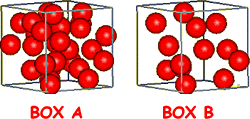

Modern high-precision density meters additionally provide a viscosity correction even viscosity determination and a reference oscillator to enable accurate results over a large range of densities, temperatures, and viscosities. Digital density meters are easy to operate and there are no special requirements regarding ambient conditions or temperature control. In contrast to traditional static methods (such as hydrometers, pycnometers, or hydrostatic weighing) only a small amount of sample is needed, approx. They measure the true density (density in vacuo), so there is no influence of air buoyancy or gravity.

For more information, see here.ĭigital density meters based on the oscillating U-tube principle are very effective instruments that allow fast and precise measurements of fluid densities over a wide range of temperature and pressure. An improved method of using the U-tube principle – the Pulsed Excitation Method – has been available from 2018. However, this technology has now reached its limits. Through determination of the corresponding frequency the density of the sample can be calculated.įrom 1967, the launch of the first-ever digital density meter, to 2018, all benchtop density meters worked according to the “Forced Oscillating Method” of the U-tube principle. The tube, usually a U shaped glass tube, is excited and starts to oscillate at a certain frequency depending on the filled-in sample. Modern digital density meters are based on the oscillating U-tube principle.
#DENSITY DEFINITION MANUAL#
In comparison to these manual devices, a digital hydrometer is a small, portable digital density meter based on the oscillating U-tube principle. Due to the small size of a hydrometer’s scale, results can easily be misread. Hydrometers are probably the most basic and inexpensive density measurement tools, but they require good temperature control, which can be quite complicated, and a large sample volume (up to 100 mL). A lactometer is used for measuring the density (creaminess) of milk, a saccharometer for measuring the concentration of sugar in a liquid, or an alcoholometer for measuring the ethanol content in spirits. The number read off the scale is not always density but also derived quantities. There are many different hydrometers available depending on the use. This method is based on the Archimedes principle. If a hydrometer is immersed in a glass of water, it would sink deeper than it would in a glass of syrup because syrup is denser than water. The hydrometer is immersed in the sample and the density of the sample can be read directly from the scale: The deeper it sinks, the less dense is the sample. Hydrometers and the hydrostatic balance are both based on the Archimedes principle.įor more information on the relationship between mass and density, see here.Ī hydrometer is a floating glass body with a bulb filled with a metal weight and a cylindrical stem with a scale. This experiment helped Archimedes discover the relation of mass to volume. The crown was less dense than pure gold, so the gold had to have been mixed with another metal. It had the same mass, but more volume – that means lower average density. The crown displaced more water than the gold bar, the water went up higher – so the crown obviously had more volume. He immersed both objects in a water container.

In order to verify the gold content of King Hieron’s crown, he took the crown and a bar of pure gold of the exact same weight as the crown. We all know what he did next: he ran across town – naked – yelling: ‘Eureka!’. He realized that the overflowing water stood in direct relation to the immersion of his body volume into the water.
#DENSITY DEFINITION FULL#
(Okay, this part of the story is probably made up but read on to see what he found.) When he sank into a very full bathtub, it started to overflow. Exhausted from all the pondering over this difficult task, he took a bath. Archimedes, a great mathematician, physicist, engineer, inventor and astronomer, was asked to prove – or disprove – that Hieron’s crown consisted of nothing but gold, without destroying it.Īrchimedes went home to think about the problem. The goldsmith was accused of having added some silver to the crown. In a nutshell, King Hieron II had a crown made of pure gold.


 0 kommentar(er)
0 kommentar(er)
